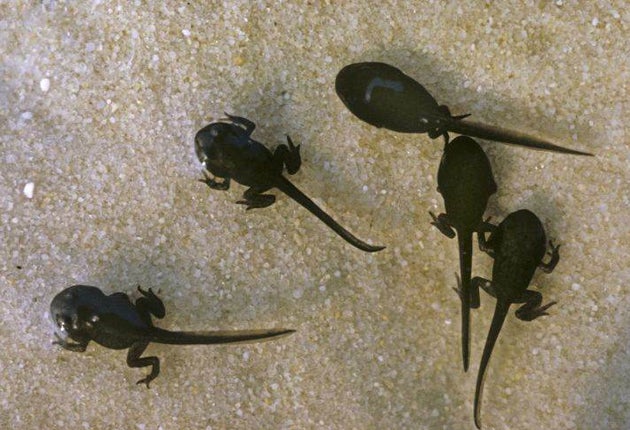Tadpoles scream when threatened by cannibals

Your support helps us to tell the story
From reproductive rights to climate change to Big Tech, The Independent is on the ground when the story is developing. Whether it's investigating the financials of Elon Musk's pro-Trump PAC or producing our latest documentary, 'The A Word', which shines a light on the American women fighting for reproductive rights, we know how important it is to parse out the facts from the messaging.
At such a critical moment in US history, we need reporters on the ground. Your donation allows us to keep sending journalists to speak to both sides of the story.
The Independent is trusted by Americans across the entire political spectrum. And unlike many other quality news outlets, we choose not to lock Americans out of our reporting and analysis with paywalls. We believe quality journalism should be available to everyone, paid for by those who can afford it.
Your support makes all the difference.Some might think it's up there with the flying pig and the killer rabbit, in the list of improbable animals – the screaming tadpole. But it's real.
Scientists in South America have discovered that the larvae of the Argentine horned frog, a species remarkable for its tendency to try eating anything that passes, emit a "brief, clear and very audible metallic-like sound" when they feel threatened.
Horned frog tadpoles are naturally aggressive and carnivorous, often eating the tadpoles of other frogs, and it is possible that the scream is mainly emitted when another horned frog tadpole moves to attack it as a measure to avoid cannibalism.
The discovery, reported in the Swedish journal Acta Zoological, is the first evidence for the production of sound by the larvae of anurans (frogs and toads). It was made by Dr Guillermo Natale of the National University of La Plata in Buenos Aires, and his colleagues, when they were studying the mating calls and croakings of adult frogs. Many adult amphibians use loud sounds such as croaks to advertise their presence, and often to attract sexual partners but until now researchers did not realise amphibian larvae might also produce sounds underwater.
That changed when Dr Natale caught a horned frog tadpole in a pond using a hand-held net. "We heard a brief, clear and very audible metallic-like sound," he said. To investigate further, the researchers caught a wild pair of breeding adults, and began a programme to rear them in captivity.
The researchers found that when horned frog tadpoles come into contact with, or are prodded by, an external object such as a metal spatula, they let out a brief, metallic sound consisting of a short series of higher frequency pulses. The tadpoles produce the sound by pushing air out of their lungs, which develop very early; tadpoles that are just three days old are capable of emitting loud distress signals. The discovery raises the possibility that other tadpoles may produce sound.
Join our commenting forum
Join thought-provoking conversations, follow other Independent readers and see their replies
Comments